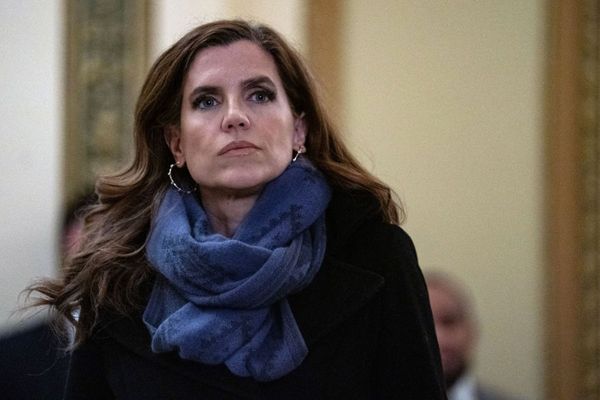EXHIBITIONS so often compel us with the glimpse into the artist’s mind, a snapshot of the world from the perspective of a creative.
And maybe it’s also because they’re temporary – there for only a few months or even weeks and then gone, leaving you and whoever else decided to stop by with the fleeting memory of beautiful work.
It’s that perspective that brought me to the temporary exhibitions on at the City Art Centre as part of the Edinburgh art festival.
Stepping into the room decorated for the Platform24 collective is like walking into a dream.
In one direction, soft sheets fall from the ceiling, bathing the room in a red glow. In another, there’s the dull thud of food items hitting a transparent screen. And there’s a strong smell of natural dyes filling the air. It’s a true sensory experience.
I’m drawn in by the smell of the dye. Alaya Ang’s work relies on mud-dyed cloths, on which the audience was invited to draw on their own cartography with chalk and then embroider in bright gold thread.
The interpersonal and interactive element of this piece ensures you sit, pause for a few minutes as you embroider, reflecting on the area you’ve decided to cover and contemplate on what other people may have drawn. The journey you may have taken to get to the art gallery. The sound of the thread as you pull it through the fabric.
Next is a video of a person having slop thrown at them from someone behind the camera – a piece by Edward Gwyn Jones. Though they recoil and the noise is harsh, it hits against a transparent screen. The person was at no risk of being hurt.
It’s sudden, impersonal. As it’s behind the camera, it’s just out of reach, so you can’t quite feel immersed. But though it loses its punch after a few watches, you can’t forget the initial flinch.
Stepping inside the little inlet, there is a “get ready with me” video looking like it was filmed on TikTok opposite a picture of an easy-read infographic like one would appear on Instagram about breast reduction surgery.
Kialy Tihngang’s piece is autobiographic, and it shows. The direct way the woman discusses her breasts and her trauma associated with them despite leaving emojis and doing her makeup routine is a brilliant way of conveying the commercialisation of complex topics on social media and the objectification of black women.
Finally, I wander through the red sheets, a piece by Tamara MacArthur, feeling the soft touch akin to the way a friend, a lover may touch your skin until I reach where the silks are at their densest. Before my eyes is a nook, a cosy room illuminated with plastic candles and playing the song Crazy by Patsy Cline. It’s a room for two lovers, a nest, if you will, hidden away from the rest of the gallery and feeling like a private space for just you and them.

Returning to the lower floor, there is even more red, but a harsher one this time. Sanctus! by Renèe Helèna Browne is a mixed-media composition looking from religion to folklore as a way of understanding grief and belonging.
An abstract film jumps between imagery of drag racing and Christian imagery, drawn together by the colour red, to tell of a tale of grief – the artist’s mother grieving her brother.
The mother seems distanced from God, possibly due to her grief but seems to cling to it as a way of processing feelings just beyond her reach. Pull away from the source is repeated like a mantra. Pull away from everything reminding her of her brother, maybe?
The visuals are striking – the brother’s drag racing is in vibrant red while the folklore of Ireland – tales of Tír nan Óg – in a bright green.
An invigilator adds to that interpretation the idea of Joan of Arc and sacrifice – the subject of the etchings on the wall outside the film covered in bright red glass. It’s a striking depiction of the lingering feelings left behind by the dead.
The final exhibition is that of Filo by Karol Radziszewski, and it delves into the history of underground queer magazines in Eastern Europe.
A collection of illustrations and pieces from the magazines and the artist’s own drawings intended to be in the style of eastern propaganda but appearing more like pre-cubism Picasso to my eye tell of the story of underground resistance.
It’s a collection of memory, so we’ll never truly forget the bravery of those who stood up against Communist censorship.
These temporary spaces transformed the gallery for three short weeks and now other pieces sit there, ready to be remembered by another wave of tourists – and that is utterly compelling.







